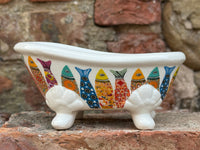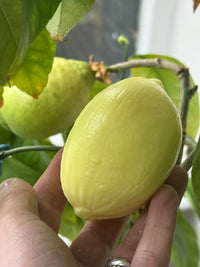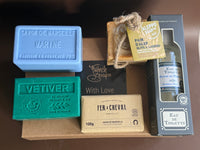HAPPY TO HELP
Telephone or WhatsApp +44 (0) 1423 803080 Chat or Email, whatever is best for you.
Telephone or WhatsApp +44 (0) 1423 803080 Chat or Email, whatever is best for you.







This blog has been inspired by a recent customer query on how to tell if you are buying authentic Savon de Marseille. The customer emailed us asking for some proof of authenticity so he could be reassured with his purchases. He was prompted to make these enquiries after buying "Savon de Marseille" from Amazon which unfortunately turned out to be fake.
The term "Savon de Marseille" does not have a protected designation (like Champagne does) and it can be difficult for customers to know what is the true product. In addition, genuine savonneries in Provence (like the ones we work with here at Frenchsoaps) use the stamp "savon de Marseille" on all sorts of soap that they make as it is used broadly as a definition of soap made in Provence. So hopefully this blog will throw some light on what we mean by traditional Savon de Marseille and what to look for to ensure you are buying an authentic product.
Traditional Savon de Marseille is made to a 100% vegetal recipe with no added colourings, fragrances, preservatives or any artificial ingredient. The soap is made in a traditional way and has been made in this way for hundreds of years and is only made in the Marseille region of Provence in France. It is as pure as soap can be.
The Traditional Savon de Marseille that we sell is made in partnership with the famous Savonnerie du Fer à Cheval in Marseille. The authenticity is guaranteed by the mark "Savon de Marseille" (see below) created by the Union of Soap Professionals of Marseille an association created in 2011 to defend, promote and publicise authentic Savon de Marseille.

The "Savon de Marseille" label is issued by the Soap Professionals Union of Marseille to companies located in a specific geographical area and respecting a manufacturing process defined in a charter. Companies are audited annually and must show:
1) Original recipe composition:
2) 5 Step production process:
3) Geographical origin:
Our range of Traditional Savon de Marseille soaps includes 100g, 300g and 600g cubes of Natural and Olive soaps, as well as tranches (slices) with twine and stain removing/laundry bars. To see our full range - click HERE
See our best selling Savon de Marseille Olive cube here
There are other genuine French soaps made in and around Marseille and other parts of Provence that are also stamped with the words "Savon de Marseille". Fragrant ranges of perfumed soaps have added colours, plant and flower essences, perfume and other added ingredients such as sweet almond oil, argan oil and shea butter. These soaps are triple milled to give a creamy moistursing lather. Making soap with local ingredients and perfumes has developed over the decades in Provence and stems from the old Marseille savonneries and traditions. These French soaps are show cased on the soap stalls in markets all around France. These soaps made in Provence are stamped with the words "Savon de Marseille" as they literally are soaps made in the Marseille region. We tend to call these soaps "Marseille" soaps to try and make it less confusing!!
To see our ranges of fragranced French Marseille soaps - click HERE
See our best selling Marseille soap here
Telephone or Whats App: 01423 803080
Email: bonjour@frenchsoaps.co.uk
Social: @FrenchsoapsUK
Address: Unit 14 Ousegill Business Park, Carr Side Road, Great Ouseburn, North Yorkshire, YO26 9AE
Sign up for our newsletter and get all the latest news, offers and more delivered straight to your inbox. You can unsubscribe at any time. By 'submitting' you are agreeing to our T&C's and Privacy Policy.
Gifting couldn't be easier
Add a gift message to be emailed to when their parcel arrives, or at a time of your choice.
